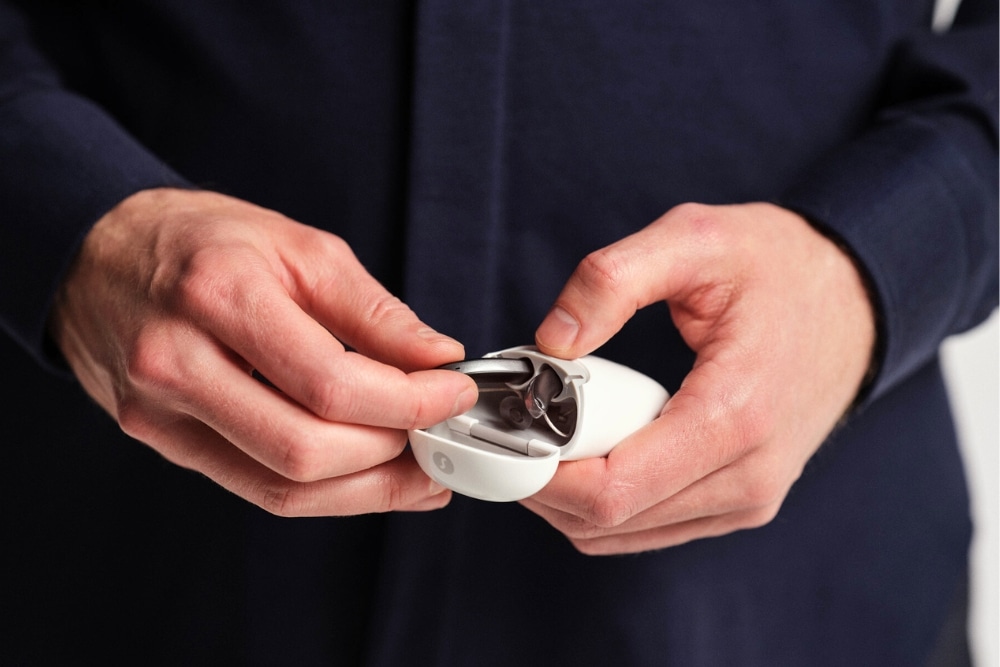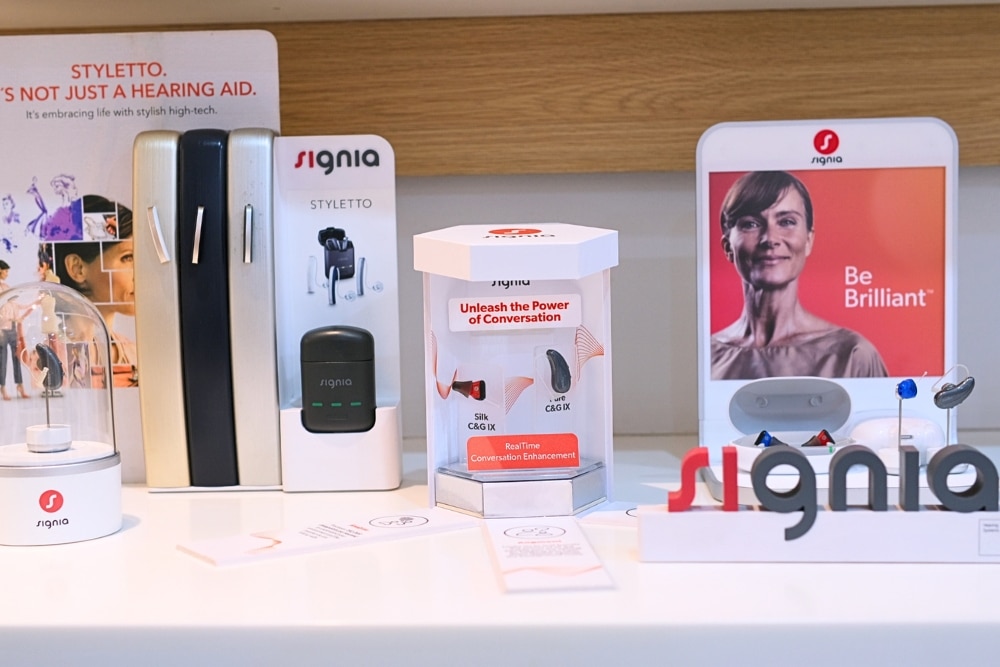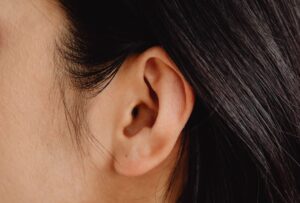Hearing aids are essential devices that significantly enhance the quality of life for individuals with hearing loss. These sophisticated devices amplify sounds, making it easier for users to hear and communicate effectively. Understanding what hearing aids do, the different types available, and their capabilities can help you make an informed decision about the best hearing aids for your needs.
How Exactly Do Hearing Aids Work?
Hearing aids function by amplifying sound waves and delivering them to the ear. The basic parts of a hearing aid include:
- Microphone: The microphone captures sound waves from the environment. It is typically designed to pick up sounds from different directions, though advanced models can focus on sounds from specific sources.
- Amplifier: The amplifier processes and increases the volume of the captured sounds. Modern hearing aids use digital amplifiers that can be finely tuned to amplify specific frequencies, making speech clearer without boosting background noise excessively.
- Speaker (Receiver): The speaker converts the amplified electronic signals back into sound waves and delivers them into the ear canal. This enables the wearer to hear amplified sounds that they would otherwise miss.
This combination of components works together to enhance hearing by selectively amplifying sounds, improving speech comprehension, and making everyday interactions easier.
Modern Hearing Technologies
Advancements in hearing technology have revolutionized the way individuals with hearing loss experience sound. These technologies are designed to provide a tailored listening experience, making it easier for users to navigate different auditory environments and enjoy a higher quality of life. Explore the innovative features below that make these improvements possible.
Multiple Listening Programs
Modern hearing aids come equipped with multiple listening programs tailored to different environments:
- Quiet Environment: Enhances soft sounds to improve hearing in quiet settings.
- Noisy Environment: Reduces background noise while emphasizing speech, making conversations clearer.
- Music Mode: Preserves the rich dynamics of music by providing a broader range of sound frequencies.
- Outdoor Mode: Reduces wind noise and enhances environmental sounds for better awareness.
Users can switch between these programs manually or through an automatic setting, ensuring optimal hearing in various situations. These listening programs make hearing aids versatile, allowing users to adjust their devices to fit their specific listening environment and needs.
Directional Microphone Technology
Directional microphone technology is a crucial feature in many hearing aids, serving the purpose of improving speech understanding in challenging listening environments. This technology allows the hearing aid to focus on sounds coming from a specific direction, typically in front of the user. By enhancing sounds from the desired direction and reducing noise from other areas, directional microphones improve speech understanding in challenging listening environments.
- Fixed Directional Microphones: Focus on sounds from one direction, usually in front of the wearer, which is ideal for conversations.
- Adaptive Directional Microphones: Automatically adjust to focus on the loudest sound source, which is useful in dynamic environments.
- Omnidirectional Microphones: Capture sound from all directions, providing a natural listening experience in quiet settings.
Customizable Tinnitus Relief
Modern hearing aids often come equipped with customizable tinnitus relief features that allow users to personalize a soothing sound stimulus designed to help manage their tinnitus. The sound can be adjusted in terms of volume, frequency, and type, such as white noise, nature sounds, or gentle music. This customization helps to mask the ringing or buzzing noises associated with tinnitus, providing relief and making it easier to concentrate and relax.

Behind-the-Ear Digital Hearing Aids vs Custom Hearing Aids
Behind-the-ear (BTE) digital hearing aids are among the most versatile and widely used types of hearing aids. These devices rest comfortably behind the ear, with tubing that directs sound into an earmold inside the ear canal. They convert sound into digital signals, allowing for fine-tuned adjustments that enhance speech clarity, reduce background noise, and eliminate feedback. BTE hearing aids feature robust noise reduction capabilities that work to minimize unwanted ambient sounds, making it easier to focus on important noises and conversations. Feedback cancellation is another critical function, designed to detect and eliminate the high-pitched whistling sound that can occur with hearing aids.
Custom fitting hearing aids, on the other hand, are tailored to fit the unique contours of the user’s ear, ensuring a secure and comfortable fit essential for all-day wear. These hearing aids can be made in various styles. Understanding how the personalized fit of custom hearing aids enhances comfort and reduces the risk of discomfort, making the hearing aid less noticeable to the user, is crucial. The snug fit also improves sound quality by reducing the chance of sound leakage.
When deciding which of the two to choose, it’s important to remember that each type might suit different needs. Understanding why these features matter to your specific hearing loss and lifestyle will help you make the best choice for your auditory health.
Do Hearing Aids Help You Hear Everything?
Hearing aids significantly improve the ability to hear and understand speech, particularly in noisy environments. These devices enhance overall hearing by amplifying sounds, making conversations and ambient noises clearer and more accessible. However, it’s important to understand that hearing aids don’t restore normal hearing or completely eliminate background noise. Their primary function is to amplify sounds, making them easier to hear and understand.
While advanced features like directional microphones and noise reduction technology can help manage background noise, hearing aids are not a cure-all solution. They work best when combined with good communication strategies, such as facing the person you’re speaking with, ensuring good lighting, and minimizing competing noises. A supportive environment, including understanding family members and friends who are mindful of how they communicate, can also greatly enhance the effectiveness of hearing aids. Regular follow-ups with an audiologist to fine-tune settings can further optimize the hearing experience.
Making an Informed Choice for Better Hearing
Hearing aids are powerful tools that significantly enhance the hearing abilities of individuals with hearing loss. Understanding how hearing aids work, the different types available, and their specific features can help you make an informed decision about the best device for your needs.
To ensure you select the right hearing aid, it’s essential to get your hearing checked by professionals. You can head over to a hearing solution center in the Philippines, like Active Hearing, to receive a comprehensive hearing test and personalized advice. These centers offer advanced diagnostic tools and expert guidance to help you understand your hearing needs and choose the best hearing aid for your lifestyle.
Whether you choose a digital hearing aid for its advanced technology or a custom hearing aid for its personalized fit, professional support can help you enhance your auditory experience and enjoy a richer, more connected life.








